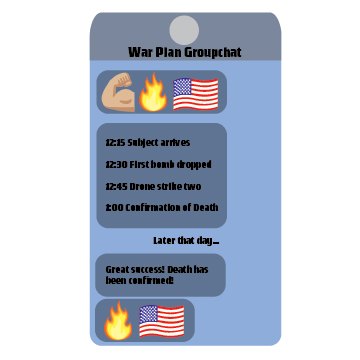The Editor-in-Chief of magazine publisher The Atlantic, Jeffrey Goldberg, revealed on March 24 that he was accidentally given access to a private group chat on the messaging app Signal, which was dedicated to discussing highly sensitive attack plans against Houthi rebels in Yemen.
Goldberg received a connection request over Signal from a user named “Michael Waltz,” the same name President Trump’s national security advisor, on March 11. Goldberg accepted the request with the assumption that it was someone pretending to be Waltz, though hoping for the small chance that it may truly be him, possibly reaching out to deliver a scoop.
On Thursday, March 13, Goldberg was added to a group chat titled “Houthi PC small group,” with a message from user Michael Waltz stating, “Team – establishing a principles group for coordination on Houthis, particularly for over the next 72 hours. My deputy Alex Wong is pulling together a tiger team at deputies/agency Chief of Staff level following up from the meeting in the Sit Room this morning for action items and will be sending that out later this evening.”
Aside from Goldberg and the user named Michael Waltz, there were 17 other members of the group chat with names as follows: Scott B, Walker Barrett, Brian, Pete Hegseth, Jacob, Dan Katz, Joe Kent, S M, MAR, MAR, Mike Needham, John Ratcliffe, Susie Wiles, TG, JD Vance, Steven Witkoff and Alex Wong.
According to Goldberg, while he wasn’t sure of the group chat’s authenticity, the messages read quite closely, if not exactly, like how he would expect the users to speak and type if they were truly who their named claimed they were. Regardless, both Goldberg and those he consulted highly doubted the authenticity of the messages.
On March 14, messages continued to be sent between the group members discussing plans on how to coordinate against Houthi rebels or if they should at all. This was until the user identified as S M, whom Goldberg assumed was supposed to be deputy White House chief of staff Stephen Miller, claimed that the president gave them the green light, and that they needed to discuss what they expect in return from Egypt and Europe for clearing the Houthi rebels from the canals.
The next day, on March 15, the user named Pete Hegseth posted an update detailing exact timings of attacks on the rebels, with the user named JD Vance replying with “I will say a prayer for victory.” A little over an hour later, updates came from the user named Michael Waltz claiming they had multiple positive IDs on targets and had demolished a building with one of them inside.
Celebrations followed this revelation, even with the user named Michael Waltz responding with a fist emoji, an American flag emoji and a fire emoji. Goldberg began to search social media platform X, where he discovered reports of explosions being heard across Yemen’s capital.
The user named Pete Hegseth later notified the group that strikes would continue through the night, and that things were going well with the assault. More celebrations followed, including the user named Steve Witkoff sending two prayer emojis, one strong arm emoji, and two American flag emojis.
On Sunday, March 16, Michael Waltz would appear on ABC News to discuss the strikes, which caused Goldberg to become fully confident that the messages were real, subsequently removing himself from the chat and triggering an automatic message notifying the group chat of his departure, with seemingly none of the users taking notice.
National Security Council spokesman Brian Hughes would later confirm that the group was indeed authentic.
After the story was published, secretary of defense Pete Hegseth stated that “Nobody was texting war plans. And that’s all I have to say about that” when asked about the group chat. President Donald Trump, Director of National Intelligence Tulsi Gabbard and National Security Adviser Michael Waltz also insisted that the messages in the chat did not include classified information.
It is worth noting that, despite the group’s nature, the president’s top military adviser, Christopher Grady, was not included in these discussions.
The Atlantic would later publish screenshots detailing every message that Goldberg observed due to multiple officials stating that the information was not classified. However, the name of the CIA’s chief of staff, which was shared in the messages, was redacted at the request of a CIA spokesperson, as CIA intelligence officers aren’t supposed to be publicly identified. This is in contradiction to Director of the CIA John Ratcliffe’s testimony that the officer was not undercover, and it was acceptable to directly name them in the messages.
It remains unclear as to why or how Goldberg was invited into the group.




